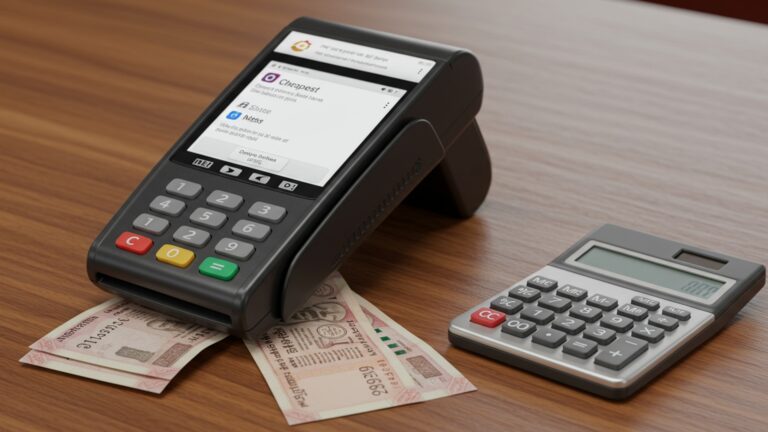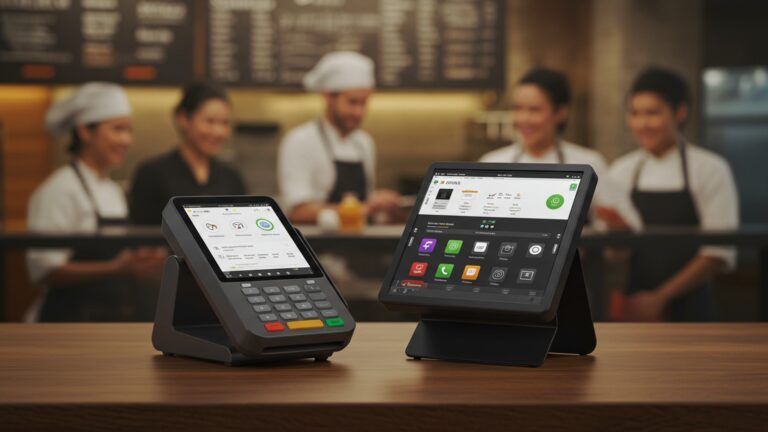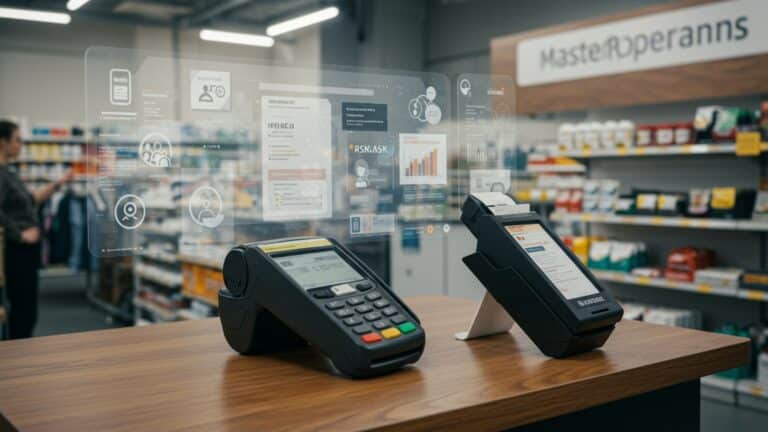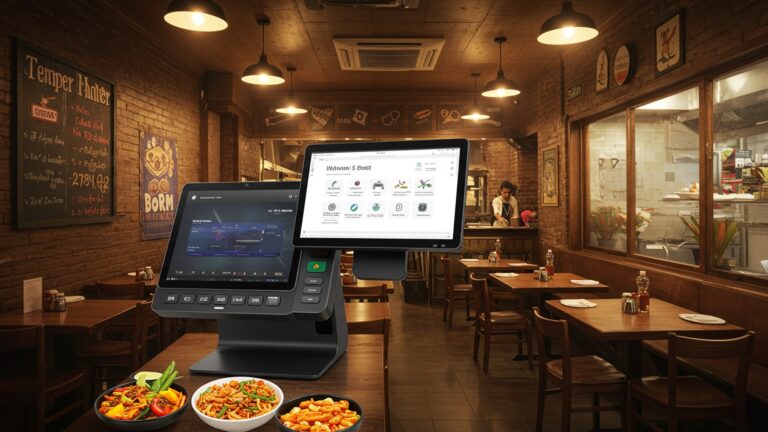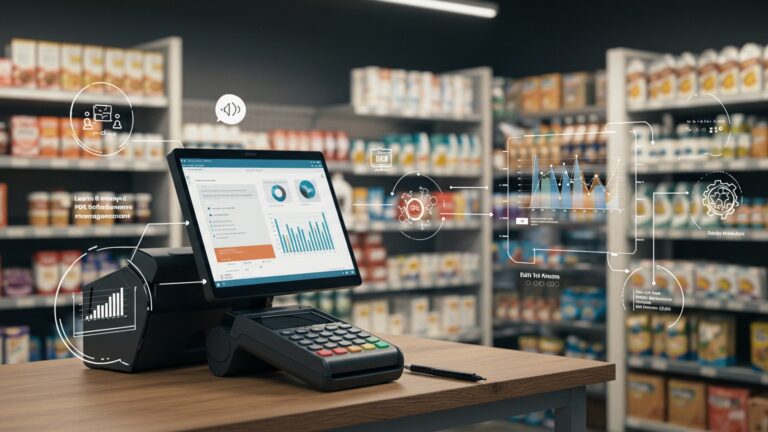Learn 6 Smart Strategies for Better Inventory Management with POS in India
India’s vibrant retail sector, increasingly influenced by rapid e-commerce growth and complex supply chains, demands impeccable inventory control. Businesses frequently battle the silent profit drain of inaccurate stock counts, costly overstocking. frustrating stockouts that deter customers. Modern Point-of-Sale (POS) systems offer the crucial technological backbone, providing real-time data and automating critical functions from procurement to dispatch. Effective inventory management POS India solutions empower businesses, from bustling city supermarkets to specialized boutique stores, to predict consumer trends, optimize storage. significantly reduce operational inefficiencies, securing a vital competitive edge in a market where agility directly translates into sustained growth.
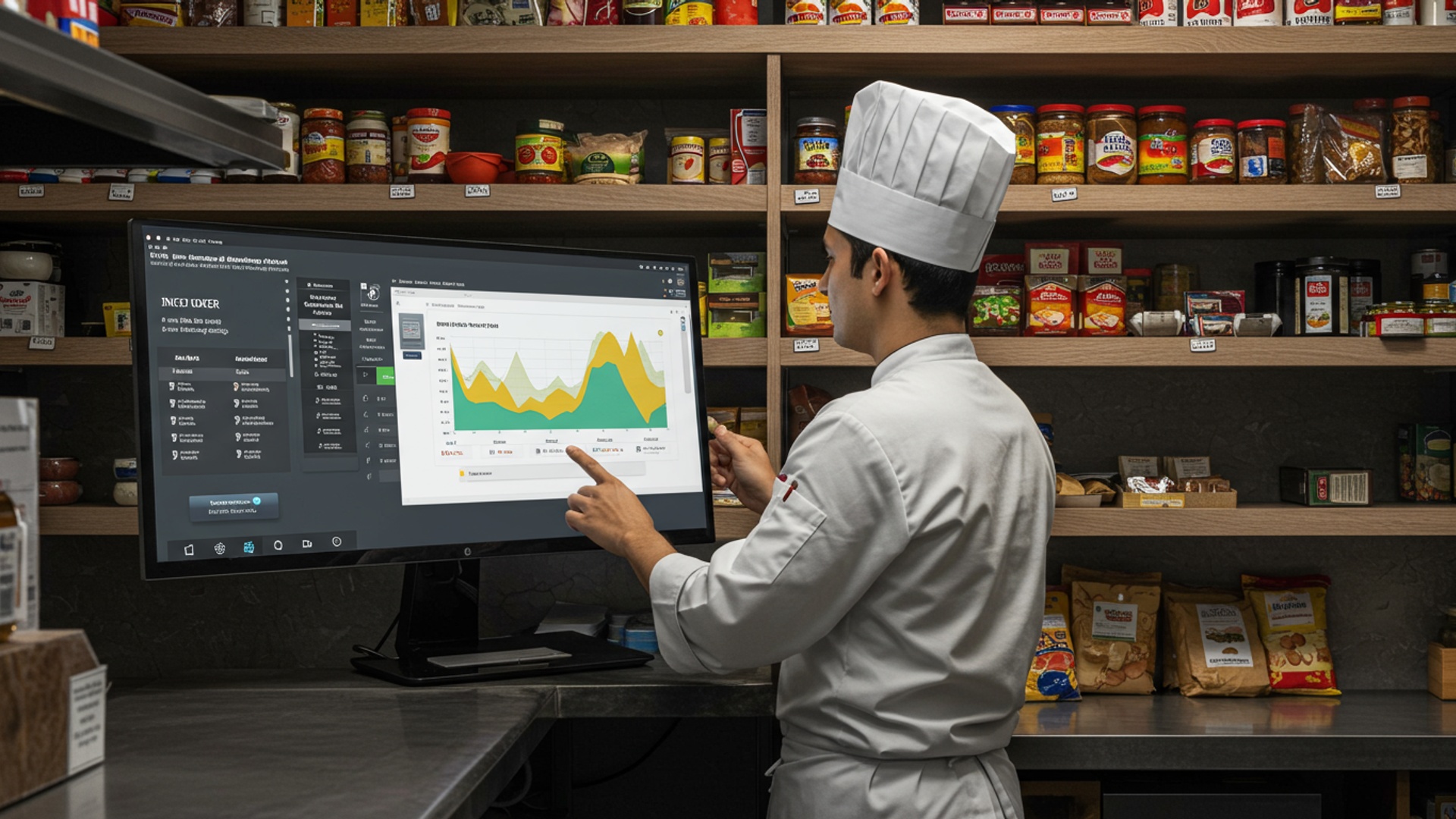
Understanding the Core: What is Inventory Management and POS?
In the bustling and competitive retail landscape of India, efficient inventory management is not just a best practice; it’s a critical pillar for business survival and growth. At its heart, inventory management is the systematic process of ordering, storing, tracking. controlling a company’s stock – from raw materials to finished goods. Its primary goals are to minimize costs, optimize stock levels, prevent stockouts or overstocking. ensure products are available when and where customers want them. Without proper management, businesses face significant financial losses dueored to obsolete stock, missed sales opportunities, or excessive carrying costs.
- Point of Sale (POS) system
- Inventory management POS India
Strategy 1: Embrace Real-Time Tracking for Unprecedented Visibility
One of the most significant advantages of a modern POS system is its ability to provide real-time inventory tracking. Gone are the days of manual stock counts that are often outdated the moment they are completed. With a POS system, every sale, return. new stock arrival is instantly recorded and updated in your inventory database.
- How it Works
- Benefits for Indian Businesses
- Actionable Takeaway
When a product is scanned and sold at the checkout, the POS system automatically deducts that item from your inventory count. Similarly, when new stock arrives and is scanned in, the system adds it to your available inventory. This continuous update mechanism ensures that your stock levels are always current.
For retailers operating in dynamic Indian markets, real-time tracking means you always know exactly what you have on hand, across all SKUs and locations. This prevents the frustrating scenario of telling a customer an item is in stock only to find it’s not, or missing out on sales because you thought you were out of an item you actually had. It also enables quick identification of slow-moving items and bestsellers, guiding purchasing decisions. For example, a multi-brand electronics store in Delhi can instantly check stock availability of a specific smartphone model across all its branches before promising delivery to a customer, significantly enhancing customer experience.
Ensure your POS system offers robust real-time tracking capabilities and train your staff thoroughly on scanning procedures for all incoming and outgoing stock. Regularly reconcile physical stock with system data to maintain accuracy.
Strategy 2: Automate Reordering with Smart Triggers
Manual reordering is not only time-consuming but also prone to human error, leading to either stockouts or overstocking. A smart POS system can automate much of this process, making Inventory management POS India far more efficient.
- How it Works
- Example Use Case
- Comparison: Manual vs. Automated Reordering
- Actionable Takeaway
Modern POS systems allow you to set minimum and maximum stock levels (reorder points) for each product. When an item’s quantity drops below its predefined minimum, the system can automatically generate a purchase order or alert you to reorder. Some advanced systems can even factor in lead times from suppliers and sales velocity to suggest optimal reorder quantities.
Consider a popular grocery chain in Bangalore. Instead of someone manually checking biscuit stock every few days, the POS system, observing that a particular brand of digestive biscuits has hit its reorder point of 50 packs, automatically flags it for replenishment. The system might even suggest ordering 200 packs based on historical sales data and typical delivery schedules, preventing both empty shelves during peak hours and excessive inventory holding costs.
| Feature | Manual Reordering | Automated Reordering (POS) |
|---|---|---|
| Accuracy | High risk of human error, miscalculation | Data-driven, precise calculations |
| Time Efficiency | Time-consuming, repetitive task | Significantly reduces staff time spent |
| Stockouts/Overstock | Frequent, dependent on human vigilance | Minimized through predefined thresholds |
| Data Usage | Relies on limited, often outdated observations | Leverages real-time sales data and trends |
Configure reorder points and quantities within your POS system for all critical inventory items. Regularly review and adjust these thresholds based on sales data and market changes to optimize stock levels.
Strategy 3: Leverage Data Analytics for Predictive Forecasting
Your POS system collects a treasure trove of sales data with every transaction. This data, when analyzed effectively, provides powerful insights for predicting future demand, a crucial element for proactive Inventory management POS India.
- How it Works
- Real-World Application
- Code Sample (Conceptual Data Query for Insights)
A sophisticated POS system can generate reports on sales trends, product performance, peak selling times, seasonal demands. customer purchasing patterns. By analyzing historical sales data, you can forecast future demand for specific products. For instance, you can identify that sales of winter wear spike in North India from October to February, or that certain snacks sell significantly more during cricket match seasons.
A fashion boutique in Mumbai can use its POS data to identify that ethnic wear sales peak during festive seasons like Diwali and Eid, while Western wear sees consistent demand year-round. By analyzing year-on-year sales data, they can accurately predict how much stock to order for the upcoming festive season, avoiding both overstocking of expensive garments and missed sales due to insufficient popular items. Some POS systems even offer integrated analytics dashboards that visualize these trends.
SELECT product_name, SUM(quantity_sold) AS total_sales, AVG(price) AS average_price, MONTH(transaction_date) AS sales_month, YEAR(transaction_date) AS sales_year FROM sales_transactions WHERE transaction_date BETWEEN '2022-01-01' AND '2023-12-31' GROUP BY product_name, sales_month, sales_year ORDER BY total_sales DESC;
This conceptual SQL query illustrates how a POS database could be queried to extract sales trends by product, month. year, forming the basis for predictive analytics.
Regularly review the sales reports and analytics features of your POS system. Use these insights to fine-tune your purchasing and merchandising strategies, especially for seasonal or trending products.
Strategy 4: Synchronize Inventory Across All Sales Channels
Many businesses in India operate through multiple channels – a physical store, an e-commerce website, social media sales, or even multiple brick-and-mortar locations. Maintaining accurate inventory across all these channels is a monumental task without a unified system.
- The Challenge
- POS as the Central Hub
- Example
- Actionable Takeaway
Without synchronization, a product sold online might still show as available in your physical store’s inventory, leading to customer disappointment and order cancellations. Conversely, an item sold in-store might still be listed on your website, creating similar issues.
A robust POS system acts as the single source of truth for your inventory. When integrated with your e-commerce platform and other sales channels, any sale or return, regardless of where it occurs, instantly updates the master inventory. This ensures consistency and prevents overselling.
A handicraft store in Jaipur selling unique items both from its shop and through an online portal benefits immensely. If a customer buys a specific hand-painted vase online, the POS system immediately updates the stock count for that vase, making it unavailable for purchase in the physical store and vice-versa. This seamless integration ensures accurate stock levels everywhere, enhancing customer trust and operational efficiency for Inventory management POS India.
Invest in a POS system that offers seamless integration with your e-commerce platform and other sales channels. Ensure all inventory updates are synchronized in real-time to avoid discrepancies and provide a consistent customer experience.
Strategy 5: Combat Shrinkage and Boost Security
Shrinkage, which refers to inventory loss due to theft, damage, errors, or administrative discrepancies, is a significant drain on profitability for businesses globally, including in India. A POS system can be a powerful tool in mitigating these losses.
- How POS Helps
- Audit Trails
- User Permissions
- Stock Reconciliation
- Reduced Manual Errors
- Real-World Scenario
- Actionable Takeaway
Every transaction, including sales, returns, discounts. inventory adjustments, is logged with a timestamp and the associated employee. This creates a clear audit trail, making it easier to identify suspicious activities or errors.
POS systems allow you to set different levels of user permissions. For instance, only managers might have the authority to process refunds without a receipt or make large inventory adjustments, reducing the risk of internal theft or unauthorized actions.
Regular stock reconciliation (comparing physical counts with POS data) helps identify discrepancies. If a particular item consistently shows a deficit in physical counts compared to the POS, it could indicate theft or a process error that needs investigation.
By automating many inventory processes, POS systems reduce the potential for human error in data entry, which is a common cause of inventory discrepancies.
A retail garment store in Chennai was experiencing unexplained stock losses. By implementing a POS system with detailed audit trails and restricted employee permissions for inventory adjustments, they were able to pinpoint that a specific employee was frequently processing “returns” without corresponding physical items. The transparent record-keeping provided by the POS system helped them identify and address the issue, significantly reducing their shrinkage.
Utilize the security features of your POS system by setting granular user permissions. Conduct regular stock audits and use your POS data to investigate any discrepancies promptly.
Strategy 6: Streamline Vendor and Supplier Relationships
Effective inventory management extends beyond your own four walls; it involves smooth coordination with your suppliers. A good POS system can significantly enhance this aspect of Inventory management POS India.
- How it Works
- Centralized Purchase Orders
- Supplier Performance Tracking
- Receiving and Returns
- Cost Management
- Case Study
- Actionable Takeaway
Generate purchase orders directly from your POS system, pre-populated with items that need reordering based on your automated triggers and sales data. This streamlines the ordering process and reduces errors.
Many POS systems allow you to record supplier details, including lead times, pricing. historical order accuracy. This data helps you evaluate supplier performance and negotiate better terms.
Easily record incoming stock directly into your POS system, comparing it against the purchase order. Similarly, process returns to suppliers efficiently, ensuring your inventory records are always accurate.
Track the cost of goods sold (COGS) for each product as it comes in, providing accurate profitability analysis and aiding in pricing strategies.
A chain of pharmacies across Tier-2 cities in India struggled with managing hundreds of unique pharmaceutical products from various distributors. By integrating their POS system with their supplier network, they could automatically generate purchase orders for medicines nearing expiry or hitting reorder points. The system also tracked each supplier’s delivery times and pricing, allowing the pharmacy to prioritize reliable vendors and negotiate better bulk discounts. This not only improved stock availability but also reduced their operational costs and enhanced their overall Inventory management POS India strategy.
Leverage your POS system for generating, tracking. managing all purchase orders. Use the supplier performance data within your POS to optimize your procurement processes and strengthen vendor relationships.
Conclusion
Embracing the smart strategies discussed isn’t just about managing stock; it’s about fundamentally transforming your retail efficiency and profitability in India. A robust POS system moves beyond simple billing, becoming your strategic ally in inventory management. Consider a bustling kirana store in Bengaluru, which, by implementing real-time inventory tracking, drastically cut down on expired dairy products and kept fast-moving staples consistently stocked, something almost impossible with manual methods. This proactive approach, fueled by accurate data, allows you to anticipate demand and optimize ordering, crucial in today’s dynamic market where consumer preferences, especially post-pandemic, can shift overnight. My personal tip is to dedicate 15 minutes each week to deeply examine your POS inventory reports, focusing on your top five best-sellers and five slowest-moving items. This small, consistent effort will reveal invaluable insights, allowing you to make data-backed decisions rather than relying on gut feelings. By taking these actionable steps and leveraging your POS system effectively, you’re not just counting items; you’re cultivating a smarter, more resilient business. Begin today. watch as inventory headaches turn into significant competitive advantages, driving your venture towards sustained success.
More Articles
Discover How POS Billing Software Transforms Your Business Operations
Learn How to Choose the Right POS Software for Efficient Retail Operations
7 Essential Features Guide for Clothing Store POS Software India
7 Essential POS System Benefits for Your Saree Shop Success
FAQs
Why should I even bother with a POS for inventory management in my Indian business?
Using a POS system significantly streamlines how you track products. It helps reduce stockouts, minimize waste. gives you real-time data, which means better decision-making and ultimately, higher profits for your business.
What kind of ‘smart strategies’ are we talking about here?
These strategies focus on leveraging your POS data to optimize stock levels. Think about things like accurate demand forecasting, setting automated reorder points, efficiently managing inventory across multiple store locations, identifying slow-moving items. improving vendor relationships through better data insights.
Is this approach suitable for all types of businesses in India, like a small shop or a bigger retail chain?
Absolutely! While the scale differs, the core principles apply. Small businesses can gain immediate control and efficiency, while larger chains can manage complex inventory across multiple branches, ensuring consistency and preventing stock imbalances effectively.
Does using a POS system help with common inventory headaches Indian businesses often face?
Yes, it’s designed for that. It tackles issues like manual errors in stock counting, difficulty tracking expiry dates, challenges in managing seasonal demand fluctuations. struggles with knowing exactly what’s selling and what’s just sitting on shelves taking up space.
How complicated is it to set up a POS for managing my inventory?
Modern POS systems are generally user-friendly. Most providers offer support for setup and training. While there’s an initial learning curve, the long-term benefits in efficiency and accuracy far outweigh the initial effort, making it a worthwhile investment.
Besides just knowing what’s in stock, how else can a POS improve my business?
It does much more! A good POS system helps with sales analytics, identifying popular products, managing customer loyalty programs, processing returns smoothly. even improving staff efficiency by simplifying transactions. Better inventory means better sales and happier customers.
What specific features in a POS really make a difference for inventory management?
Look for features like real-time stock updates, automated reorder alerts, barcode scanning capabilities, detailed sales reports, multi-store inventory synchronization, supplier management tools. the ability to track product variations (like size or color). These are crucial for effective management.

